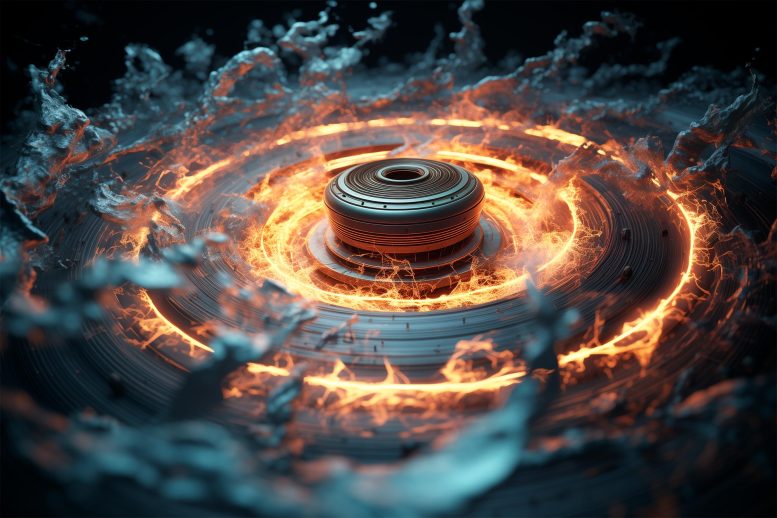
Princeton physicists have uncovered a groundbreaking quantum phase transition in superconductivity, challenging established theories and highlighting the need for new approaches to understanding quantum mechanics in solids.
New research challenges the conventional wisdom regarding superconducting quantum transitions.
Princeton physicists have discovered an abrupt change in quantum behavior while experimenting with a three-atom-thin insulator that can be easily switched into a superconductor.
The research promises to enhance our understanding of quantum physics in solids in general and also propel the study of quantum condensed matter physics and superconductivity in potentially new directions. The results were recently published in the scientific journal Nature Physics.
The researchers, led by Sanfeng Wu, assistant professor of physics at Princeton University, found that the sudden cessation (or “death”) of quantum mechanical fluctuations exhibits a series of unique quantum behaviors and properties that appear to lie outside the purview of established theories.
Fluctuations are temporary random changes in the thermodynamic state of a material that is on the verge of undergoing a phase transition. A familiar example of a phase transition is the melting of ice to water. The Princeton experiment investigated fluctuations that occur in a superconductor at temperatures close to absolute zero.
“What we found, by directly looking at quantum fluctuations near the transition, was clear evidence of a new quantum phase transition that disobeys the standard theoretical descriptions known in the field,” said Wu. “Once we understand this phenomenon, we think there is a real possibility for an exciting, new theory to emerge.”
Quantum phases and superconductivity
In the physical world, phase transitions occur when a material such as a liquid, gas, or solid changes from one state or form to another. But phase transitions occur on the quantum level as well. These occur at temperatures approaching absolute zero (-273.15 degrees Celsius), and involve the continuous tuning of some external parameter, such as pressure or magnetic field, without raising the temperature.
Researchers are particularly interested in how quantum phase transitions occur in superconductors, materials that conduct electricity without resistance. Superconductors can speed up the process of information and form the basis of powerful magnets used in healthcare and transportation.
“How a superconducting phase can be changed to another phase is an intriguing area of study,” said Wu. “And we have been interested in this problem in atomically thin, clean, and single crystalline materials for a while.”
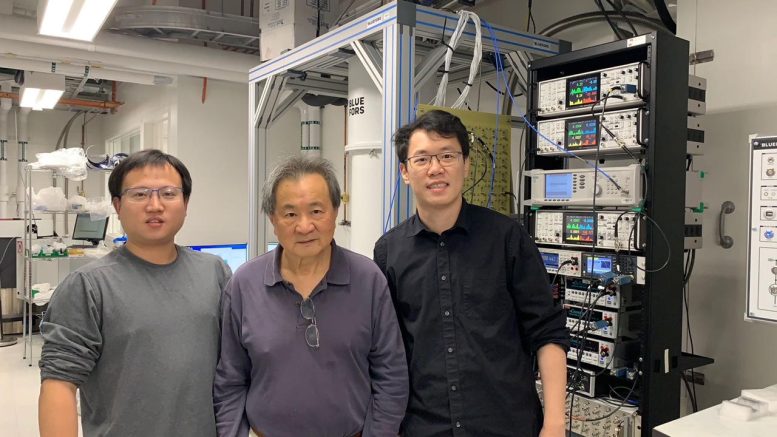
A team of Princeton University physicists led by (from left) Professor Sanfeng Wu, Professor Nai Phuan Ong, and Dicke Fellow Tiancheng Song, are authors of a new study challenging the conventional wisdom of superconducting quantum transitions. Credit: Yanyu Jia
Superconductivity occurs when electrons pair up and flow in unison without resistance and without dissipating energy. Normally, electrons travel through circuits and wires in an erratic manner, jostling each other in a manner that is ultimately inefficient and wastes energy. But in the superconducting state, electrons act in concert in a way that is energy efficient.
Superconductivity has been known since 1911, although how and why it worked remained largely a mystery until 1956 when quantum mechanics began to shed light on the phenomenon. But it has only been in the last decade or so that superconductivity has been studied in clean, atomically thin two-dimensional materials. Indeed, for a long time, it was believed that superconductivity was impossible in a two-dimensional world.
“This came about because, as you go to lower dimensions, fluctuations become so strong that they ‘kill’ any possibility of superconductivity,” said N. Phuan Ong, the Eugene Higgins Professor of Physics at Princeton University and an author of the paper.
The main way fluctuations destroy two-dimensional superconductivity is by the spontaneous emergence of what is called a quantum vortex (plural: vortices). Each vortex resembles a tiny whirlpool composed of a microscopic strand of magnetic field trapped inside a swirling electron current. When the sample is raised above a certain temperature, vortices spontaneously appear in pairs: vortices and anti-vortices. Their rapid motion destroys the superconducting state. “A vortex is like a whirlpool,” said Ong. “They are quantum versions of the eddy seen when you drain a bathtub.”
Physicists now know that superconductivity in ultrathin films does exist below a certain critical temperature known as the BKT transition, named after the condensed matter physicists Vadim Berezinskii, John Kosterlitz, and David Thouless. The latter two shared the Nobel Prize in physics in 2016 with Princeton physicist F. Duncan Haldane, the Sherman Fairchild University Professor of Physics. The BKT theory is widely regarded as a successful description of how quantum vortices proliferate in two-dimensional superconductors and destroy the superconductivity. The theory applies when the superconducting transition is induced by warming up the sample.
The current experiment
The question of how two-dimensional superconductivity can be destroyed without raising the temperature is an active area of research in the fields of superconductivity and phase transitions. At temperatures close to absolute zero, a quantum transition is induced by quantum fluctuations. In this scenario, the transition is distinct from the temperature-driven BKT transition.
The researchers began with a bulk crystal of tungsten ditelluride (WTe2), which is classified as a layered semi-metal. The researchers began by converting the tungsten ditelluride into a two-dimensional material by increasingly exfoliating, or peeling, the material down to a single, atom-thin layer. At this level of thinness, the material behaves as a very strong insulator, which means its electrons have limited motion and hence cannot conduct electricity. Amazingly, the researchers found that the material exhibits a host of novel quantum behaviors, such as switching between insulating and superconducting phases. They were able to control this switching behavior by building a device that functions just like an “on and off” switch.
But this was only the first step. The researchers next subjected the material to two important conditions. The first thing they did was cool the tungsten ditelluride down to exceptionally low temperatures, roughly 50 milliKelvin (mK).
Fifty milliKelvins is -273.10 degrees Celsius (or -459.58 degrees Fahrenheit), an incredibly low temperature at which quantum mechanical effects are dominant.
The researchers then converted the material from an insulator into a superconductor by introducing some extra electrons to the material. It did not take much voltage to achieve the superconducting state. “Just a tiny amount of gate voltage can change the material from an insulator to a superconductor,” said Tiancheng Song, a postdoctoral researcher in physics and the lead author of the paper. “This is really a remarkable effect.”
The researchers found that they could precisely control the properties of superconductivity by adjusting the density of electrons in the material via the gate voltage. At a critical electron density, the quantum vortices rapidly proliferate and destroy the superconductivity, prompting the quantum phase transition to occur.
To detect the presence of these quantum vortices, the researchers created a tiny temperature gradient on the sample, making one side of the tungsten ditelluride slightly warmer than the other. “Vortices seek the cooler edge,” said Ong. “In the temperature gradient, all vortices in the sample drift to the cooler part, so what you have created is a river of vortices flowing from the warmer to the cooler part.”
The flow of vortices generates a detectable voltage signal in a superconductor. This is due to an effect named after Nobel Prize-winning physicist Brian Josephson, whose theory predicts that whenever a stream of vortices crosses a line drawn between two electrical contacts, they generate a weak transverse voltage, which can be detected by a nano-volt meter.
“We can verify that is the Josephson effect; if you reverse the magnetic field, the detected voltage reverses,” said Ong.
“This is a very specific signature of a vortex current,” added Wu. “The direct detection of these moving vortices gives us an experimental tool to measure quantum fluctuations in the sample, which is otherwise difficult to achieve.”
Surprising quantum phenomena
Once the authors were able to measure these quantum fluctuations, they discovered a series of unexpected phenomena. The first surprise was the remarkable robustness of the vortices. The experiment demonstrated that these vortices persist to much higher temperatures and magnetic fields than expected. They survive at temperatures and fields well above the superconducting phase, in the resistive phase of the material.
A second major surprise is that the vortex signal abruptly disappeared when the electron density was tuned just below the critical value at which the quantum phase transition of the superconducting state occurs. At this critical value of electron density, which the researchers call the quantum critical point (QCP) that represents a point at zero temperature in a phase diagram, quantum fluctuations drive the phase transition.
“We expected to see strong fluctuations persist below the critical electron density on the non-superconducting side, just like the strong fluctuations seen well above the BKT transition temperature,” said Wu. “Yet, what we found was that the vortex signals ‘suddenly’ vanish the moment the critical electron density is crossed. And this was a shock. We can’t explain at all this observation — the ‘sudden death’ of the fluctuations.”
Ong added, “In other words, we’ve discovered a new type of quantum critical point, but we don’t understand it.”
In the field of condensed matter physics, there are currently two established theories that explain phase transitions of a superconductor, the Ginzburg-Landau theory and the BKT theory. However, the researchers found that neither of these theories explain the observed phenomena.
“We need a new theory to describe what is going on in this case,” said Wu, “and that’s something we hope to address in future works, both theoretically and experimentally.”
Reference: “Unconventional superconducting quantum criticality in monolayer WTe2” by Tiancheng Song, Yanyu Jia, Guo Yu, Yue Tang, Pengjie Wang, Ratnadwip Singha, Xin Gui, Ayelet J. Uzan-Narovlansky, Michael Onyszczak, Kenji Watanabe, Takashi Taniguchi, Robert J. Cava, Leslie M. Schoop, N. P. Ong and Sanfeng Wu, 5 January 2024, Nature Physics.
DOI: 10.1038/s41567-023-02291-1
This work was supported by the U.S. Office of Naval Research through a Young Investigator Award (N00014-21-1-2804), the National Science Foundation through Materials Research Science and Engineering Center program (DMR-2011750) and a CAREER award (DMR-1942942), the Air Force Office of Scientific Research Young Investigator Program (FA9550-23-1-0140), the U.S. Department of Energy (DE-SC0017863), the Gordon and Betty Moore Foundation through grants GBMF9064 and GBMF9466, the Eric and Wendy Schmidt Transformative Technology Fund at Princeton, Princeton Physics Dicke Fellowship program, the Rothschild Foundation, the Zuckerman Foundation, the David and Lucile Packard Foundation, and the Sloan Foundation.



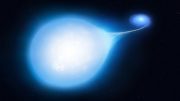

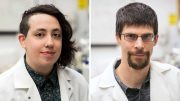
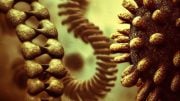
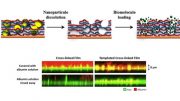
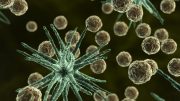
According to topological vortex gravitational field theory, the “Sudden Death” of Quantum Fluctuations involves the superposition of reverse vortices.
Starting to see the transition at the sub zero do to the rotation slowing for observation, take what data is shown and work a temperature transition for warmer temperatures of the materials’, plot a corridor at which state can a material exhibit the transition, can the effect be simulated to fit a higher temperature
The single layer of atoms is the easiest configuration for matching rotation stage to adhere conductive force, possibly causing a exchange not through but around the edge upper exchange in one direction and the lower exchange in the same rotation direction like a ribbon on each side not a helix
The paired vortices seem to be behaving as a voltage-controlled amplifier/shaper of an underlying noisy system, it’s not adding any real information, in other words.
I guess the underlying noise could be considered a “hidden variable,” at least for the time being.
I believe Colloidal magnetite cylander goes through similar behaviours when ignited as a plasma Tesla coil (wireless plasma trasmission) abruptly stops..after apparent conductivity increase
We conclude that Bose-Einstein condensation of charged particles in a strong magnetic field is possible and leads to several new and interesting phenomena, as the occurrence of phase transition in presence of an external magnetic field, without a critical temperature.
Looking into it further finding that when temperature changes lines of conduction change 90° to move parallel with electric flow (casimer capacitance) in effect can move poles 270° and impede flow, with static plasma charge of field immersion during a quantum stop at 270° I can imagine how the MIB nueraliser evolves from protoplasma lightsaber prototypes, torriodal static fields Tesla coils and wireless energy transmission. Short term memory loss upon 270°degree feild transmission….
I failed high school, my year 11 science physics project was on combining Searl generators and Tesla coils with colloidal magnetite, I got amnesia and went hysteric.